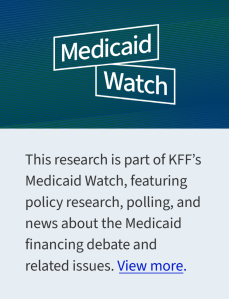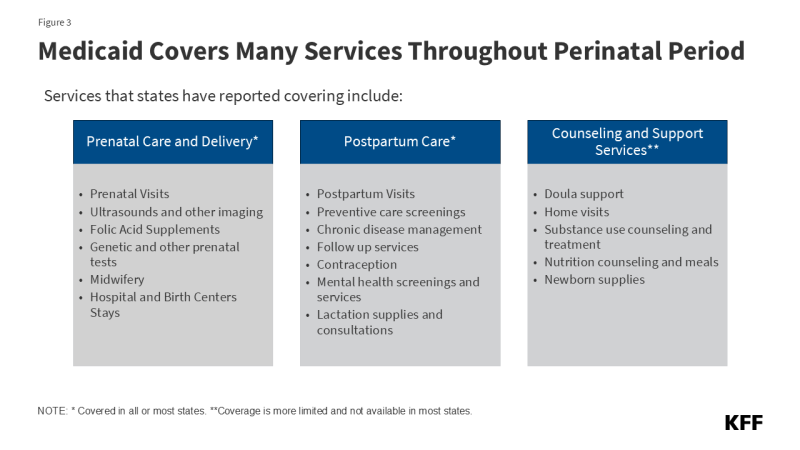 Improvement in maternal and child health is a national priority at the state and federal levels. In front of prevention of prevention, maternal mortality, many communities, policy makers, physicians, and other health care stakeholders have moved to the Medicade program to improve women and children’s health in the availability of maternity and reproductive health care in the availability of maternity and reproductive health care.
Improvement in maternal and child health is a national priority at the state and federal levels. In front of prevention of prevention, maternal mortality, many communities, policy makers, physicians, and other health care stakeholders have moved to the Medicade program to improve women and children’s health in the availability of maternity and reproductive health care in the availability of maternity and reproductive health care.
As a primary payer for maternity care in the US, the Medicade program is an integral part of maternal and child health in the country. Several federal initiatives aim to improve maternal and infant health include policies to strengthen the medicade program, and many state programs citing improvement in maternal and child health as a highest priority. President Trump and other conservatives have called for raising the birth rate. At the same time, the Congress is considering a change in the Medicade that will reduce the federal expenses on the program and the estimated 7.6 million people will lose and be unpounted and unpounted the Medicade coverage. It examines the pregnancy and postpartum coverage of the abbreviation and its support to strengthen and improve maternal health results.
1. More than four of the ten out of ten births in national communities and about half of births.
Medicade is the largest single payer of pregnancy -related services, which in 2023 pays 41% of births at the national level (Figure 1) And more than half of births in four states (Louisiana, Mississippi, New Mexico, Oklahoma). The program plays a particularly large role in rural areas, pays about half (47%) of all births in rural communities, and helps in increasing funding for hospitals in rural areas suffering from provider shortage. Rural counties are more likely to have hospitals in rural counties in states with more expander medicine eligibility criteria for pregnancy coverage, providing maternity services compared to rural counties in states with more restrictive program eligibility thresholds. Recognizing the importance of ensuring that pregnant people have access to care, the federal medicine law also prohibits out-off-pocket fees for any pregnancy related care, a significant protection for pregnant people covered by the program, because out-off-pocket health expenses for maternity care can reach thousands of dollars.
2. All states have chosen to expand the Medicade eligibility for pregnant people beyond federal minimum requirements.
By Federal Law, the minimum medicade eligibility level for pregnant women is 138% of the federal poverty level (FPL), which is $ 36,770 for a family of three. Many states also use federal children’s health insurance programs (CHIP) program to expand eligibility for pregnant women at high income levels. However, beyond almost all states, partisan division, has used its flexibility to determine the medicade income eligibility criteria for pregnancy above the minimum requirement so that more pregnant people can qualify for coverage. As a result, the average eligibility limit (Figure 2) Medicade and chip have minimum requirement in states voting for President Trump (205% FPL) for pregnancy coverage and the states voted for former Vice President Harris (217% FPL).
Many states chose to broaden eligibility for pregnant people during the 1980s, especially the high rates of infant mortality in southern states. Recognizing the importance of prenatal care for both maternal and child health results, states got the opportunity to cover pregnant people and take care of them as soon as possible.
3. States use Medicade to strengthen and improve the quality and results of maternal health care.
Amidst a national crisis in maternal health, characteristic of maternal mortality and high rates of sickness, regional deficiency in maternal and urban communities, the closure of maternity wards in rural and urban communities and ongoing concerns about reproductive care access, many states are improving maternity care and maternity quality to avail their medicid programs. These efforts include enrolls about maternal health issues and increase in outreach and investment in education for providers; Uses extended coverage disorders and mental health treatment for benefits such as doula care, home visit and drug abuse; And use new payment, delivery and performance measurement approach. For example, South Dakota has created a pregnancy care management program that provides reimbursement to providers to fulfill the objectives of Care Coordination and Post -Performance Care Program.
KFF research has found that most states cover a wide range of maternity care services including prenatal screening, folic acid supplements, labor and distribution, and breastfeeding support (Figure 3In addition, the increasing number of states has expanded the benefits beyond traditional maternity services in recent years, such as dola services and home -going programs, to promote better maternal and child and child health results and reduce racial/ethnic health inequalities. Some states are focused on other support services. For example, Nebrasca, Tennessee, and New Jersey are piloting programs that provide nutrition consultation and medical indicated foods for pregnant/postpartum individuals. In front of the federal funding cuts, these programs may be difficult or impossible to continue support for the promotion states.

4. Medicade expansion enhances access to medicade coverage First Providing an important passage for pregnancy, primary and preventive care that is displayed to improve pregnancy results.
In the decades of research, it has been found that pre-pregnancy health is a major determinant of both maternal and infant results. Coverage before pregnancy provides the opportunity to assess and manage chronic diseases affecting pregnancy, including high blood pressure, obesity, and diabetes along with important primary and preventive care. KFF Research found that 38% of women are involved in the 19–49 program in the Medicade expansion. Women are more than doubled in Medicade expansion states (Figure 4) Non-expansion states (59% vs. 26%) are to be enrolled in the program before becoming pregnant compared to women. In contrast, most of the women in non-expansion states received medicade coverage only after becoming pregnant, with about one-third (34%) enrollment after the first quarter. As a result, the medicade expansion is associated with the increasing use of pre -delivery services -with adverse rates such as low birth results such as low births such as newborns such as low births. The federal law suggests that children born to women covered by Medicade are automatically eligible and nominated in the program for the first year of their lives.
5. A person who qualifies for medicade during pregnancy faces an income eligibility rock one year after giving birth, but the rock expansion is not as much standing in the states.
Until some time ago, the Medicade pregnancy coverage ended in 60 days of postpartum. This changed with a provision in the 2021 American Rescue Plan Act (ARPA), which gave states a new option to increase postpartum coverage by 12 months. Today, all but two states (Arkansas and Visconsin) have adopted this alternative eligibility expansion, which means that berthing parents can cover for one year.
Medicade eligibility levels for parents are much more restrictive than people related to pregnancy, which means that some new parents in all states no longer qualify for the medicade after the postpartum period, but there is a division of access to coverage between expansion and non-expansion states. Among the states adopting Medicade expansion, 138% can maintain new parents of FPL to maintain the new parents’ -father Medicade eligibility and people with income above that level are generally eligible for subsidized coverage in the market. Conversely, in states that have not adopted the Medicade expansion, more low-income parents are at risk of being unlike without any kind, because their children enter the child’s years because adult income below poverty levels do not qualify for subsidy in the adult market and due to very low mediyadal eligibility levels for parents and parents do not achieve subsidy in the adult market. (Figure 5For example, in Texas, in a family of three, parents only qualify for continuous medicade coverage after postpartum period if they make less than $ 3,900 per year (15% FPL). Among all non-expansion states, the average eligibility for parents is 33% FPL, which is about $ 8,800 annually for a family of three.
Medicade expansion provides continuous coverage after postpartum period for many parents and promotes access to many parents’ health requirements, which includes conditions known during pregnancy, but require ongoing care and treatment. It contains many chronic diseases that are the main causes of adverse maternal health results, such as high blood pressure and other heart conditions, as well as depression and other mental health conditions. KFF Research suggests that women in Medicade expansion states are capable of maintaining coverage for longer after delivery. The coverage of the program of contraceptive and family planning can help people to prevent pregnancy for optimal consequences, prevent plan and space.
Discover the exceptional joy of this incredible product! Designed with care, it offers unmatched convenience to elevate your life. Whether you’re creating, this gem ensures functionality that lasts. Ideal for busy folks, it’s time to treat yourself! Don’t wait and own the difference today! Grab It Now!
Experience the beauty of this fantastic item that redefines your play! Boasting cutting-edge design, it’s built to delight with effortless style. Perfect for upgrading, this treasure complements any occasion. Hurry to love its quality! Shop Today!
Elevate your space with this unparalleled product that excels! Meticulously designed for performance, it blends innovation to enhance your life. From its robust build to its versatile durability, it’s a game-changer. Click now to make it yours! Buy It Here!
Upgrade with this phenomenal item that’s loaded with value! Created to deliver convenience, it’s perfect for anyone seeking reliability. Its premium design ensures a seamless experience every time. Shop now and enjoy what makes it so special! Get Yours Now!
Discover the magic of this incredible product that enhances your work! Featuring state-of-the-art features, it’s built for durability. Trusted by countless for its reliability, this is a gem you’ll cherish. Order now to experience it! Order Today!


